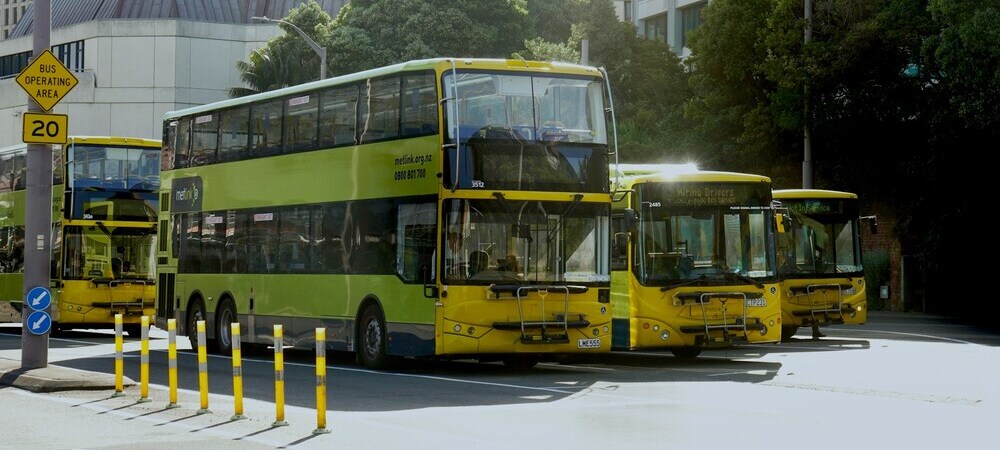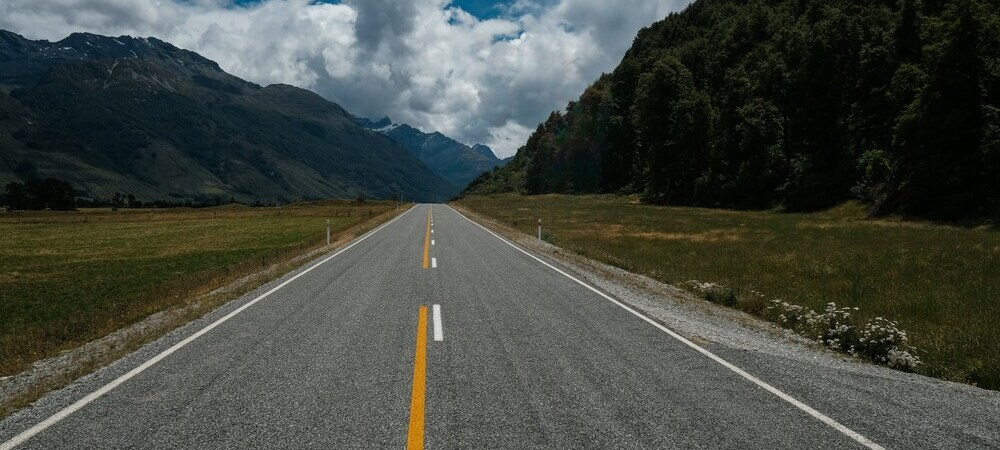The ease of transport and driving in New Zealand depends on where you choose to settle. When it comes to day-to-day travelling, you’ll find that all New Zealand cities, and most towns, have buses that are convenient to use. Auckland and Wellington even have city-suburban rail services.
On the other hand, if you’re travelling long distances or to and from more rural areas, you’ll notice that public transport can be lacking. As a result, and for the sake of convenience, most expats and locals decide to drive.
Despite the occasional narrow mountain road, it’s easy to get around New Zealand by car. The North and South islands are connected by ferries that cross the Cook Strait several times daily. These ferries are used to transport both cars and people between the islands.
Public transport in New Zealand

Cities in New Zealand are compact and pedestrian-friendly, with excellent public transport options. Fares, timetables, and maps for buses, trains, ferries, and dedicated school buses are readily accessible online. Rural areas, which make up the bulk of New Zealand’s surface area, are not as well connected, although some options for intercity travel on public transport exist.
Trains
The state-owned KiwiRail runs both freight and passenger trains in New Zealand. The company provides long-distance services across the North Island and the upper part of the South Island, and operates interisland ferries.
It’s easy to purchase single tickets and multiple-ride passes both online and at train stations across the country. Single tickets can typically be purchased when boarding a train, except in Auckland, where tickets have to be bought in advance. Auckland also offers commuters a prepaid smart card for travel on different modes of transport called the AT HOP card.
Buses
Buses in New Zealand are the backbone of the country’s various public transport networks. They are often the primary or only mode of transit in cities such as Christchurch, Hamilton, and Dunedin. Local bus services are typically contracted to private companies. The largest of these companies is NZ Bus, which operates services under different brand names in Auckland and Wellington.
There are many private bus companies in New Zealand that offer intercity travel. While some of these are primarily aimed at tourists, making use of them to get around is an affordable and practical option.
Useful links
Taxis in New Zealand
You’ll have access to a wide range of taxi services in New Zealand. Commuters can use single taxis, group transport, or shuttle options. New arrivals who want to get to know their surroundings can also take advantage of services such as day-tour packages.
The most reliable way of getting a taxi in New Zealand is to book in advance with a local service, either by phoning the company directly or booking online. That said, taxis can be hailed off the street or found at taxi ranks, especially in larger cities.
App-based ride-share services such as Uber and YourRide are also active in New Zealand. You might choose ride-share apps over traditional taxis, as they allow for automatic credit card billing and greater control over your route.
Useful links
Ferries in New Zealand
Owned by KiwiRail, the Interislander ferry service has three vessels that regularly travel across the Cook Strait between Wellington on the North Island and Picton on the South Island. An alternative service is the Bluebridge Cook Strait Ferry, which is run by Strait Shipping Limited, a privately owned company.
The journey takes around three hours, and it’s possible to transport goods that range from cars to livestock. Ferries offer onboard services such as WiFi, restaurants and play areas for young travellers.
Useful links
Driving in New Zealand

It is possible to get just about everywhere on both islands in a regular car. Crossing between the North and South islands on a ferry is also fairly easy.
The rules of the road in New Zealand are similar to those in the UK, and cars drive on the left-hand side of the road. Driving in New Zealand is not usually stressful, except perhaps during rush hour in big cities. Drivers exploring the country should exercise caution, as many roads in New Zealand’s rural areas vary in condition and can be narrow or winding.
Driver’s licences
If your driver’s licence is in English, you can drive with it in New Zealand for up to a year. Otherwise, you’ll need to carry an official translation of your licence or acquire an international driving permit. After living in New Zealand for more than 12 months, you’ll need to convert your licence to a New Zealand driver’s licence.
The conversion can be done by applying at specialist overseas conversion sites. Applying for a licence conversion requires the usual documents, such as proof of identity, an eye test, and a photo. People with certain medical conditions must provide a medical certificate proving their ability to drive safely. Those from countries without centralised licensing authorities (e.g., India, Pakistan, and Tonga) must provide extra documentation as evidence of validity. Depending on where your licence was issued, you may also have to take a written and/or practical test.
Useful links
Domestic flights in New Zealand
Travelling between cities using domestic flights in New Zealand is fast and convenient, especially when travelling from one island to the other. Costs vary by route and time of year. Regular domestic flights operate between large airports in Wellington, Auckland, Christchurch, and Queenstown, as well as smaller regional airports. Several airlines offer domestic flights in New Zealand, including Jetstar, Air Chathams, and Golden Bay Air, but the primary carrier is the national airline Air New Zealand.
